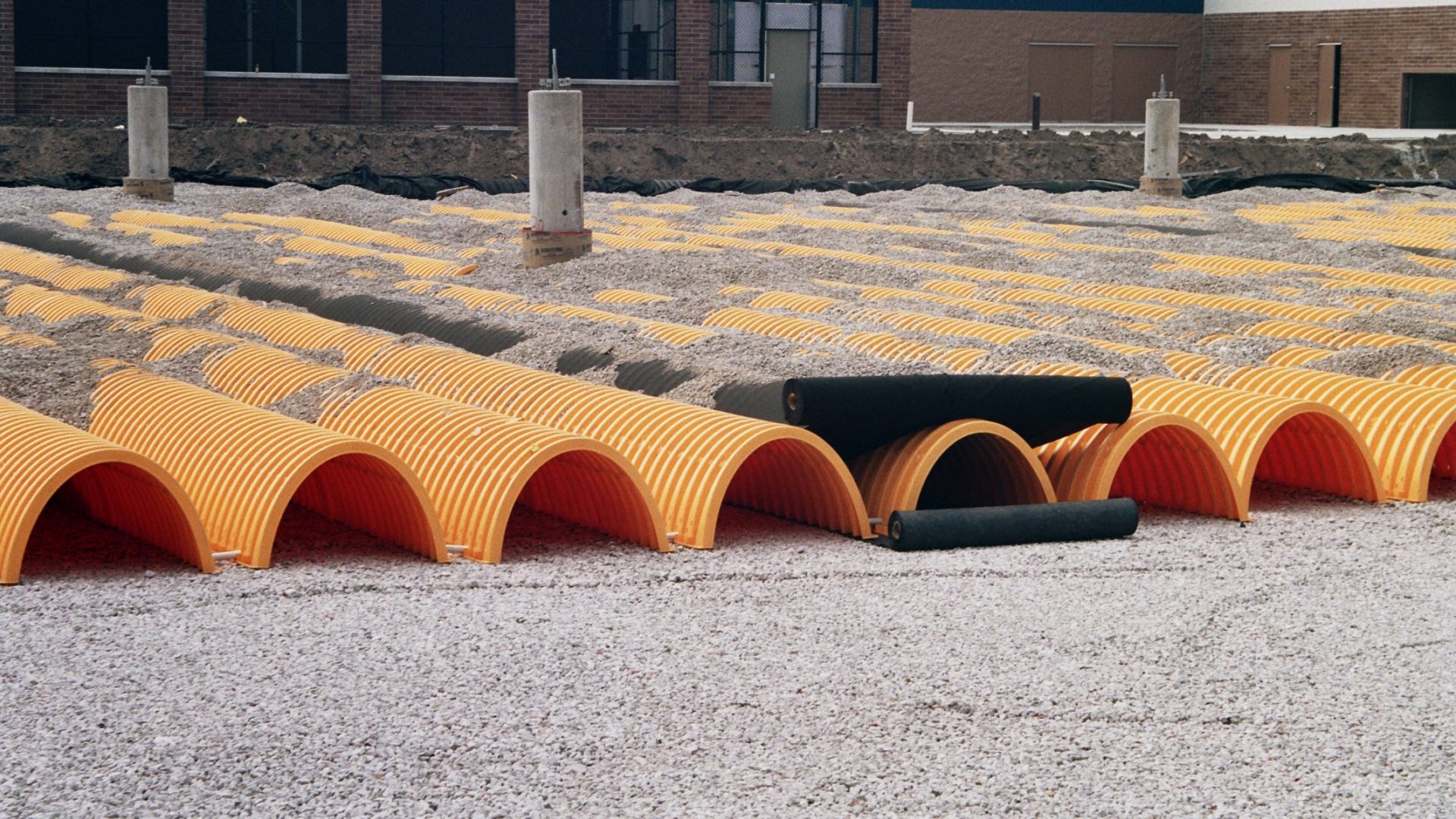
A qualified civil engineer, Stuart Crisp has been at the forefront of construction and a specialist in drainage systems for over 35 years. He has contributed to the development of numerous British and International Standards and industry specifications, and was a member of the project steering group for CIRIA C753 The SuDS Manual.
In this series of regular monthly articles, Stuart considers the different challenges facing designers and installers of below ground SuDS attenuation systems.
This month covers speed and efficiency of construction.
Everyone knows that time is money. However, there’s rarely been such pressure on build time.
Sites are starting late. COVID 19 and Brexit has created labour shortages and manufacturers are struggling to meet demand. And with Britain now officially 6% wetter than in the previous 30 years, weather-related delays are only going to increase – particularly at this time of year. It’s no surprise that across the industry, site programmes are impacted, and contractors are struggling to meet deadlines and avoid penalty clauses.
Considering the speed of installation of the SuDS system at the design stage, can make life significantly easier for clients and contractors alike.
With large diameter pipes, site logistics, transport movements and storage space need to be factored in. Pipes are not the most efficient in terms of the amount of attenuated storage that can be achieved per delivery, and the footprint area required for a given attenuated storage volume is usually greater than most other forms of proprietary solution.
Vaulted systems can be slow to construct, and whilst geocellular crates are often quicker to install, difficulties with maintenance and the need for reliable pre-treatment often count against them. New to the UK, ADS StormTech chambers are fast and easy to work with, often requiring no mechanical lifting. They also provide easy access for inspection and are simple and low cost to maintain.
An important consideration in a drainage system is managing the hydraulic requirement against the available footprint area and construction depth. Traditionally, the flexibility of geocellular crates has made them a popular choice for tight footprints. However, ADS StormTech chambers are available in a range of sizes; the larger size chambers can accommodate the required attenuation volume in a smaller footprint, and the smaller chamber sizes can enable shallow construction depths in situations with high groundwater levels, minimum cover depth below traffic loads and shallow outfalls.

The difference is particularly noticeable when it comes to more difficult terrain, especially when obstacles, such as lighting columns, below ground utilities and other structures need to be accommodated. Whilst solutions such a permeable block paving remain viable, large diameter pipes, geocellular crates and vaults are often unable to easily maintain continuous hydraulic flow through the system. StormTech chambers, are highly adaptable and can be configured around obstacles and afford multiple inlet and outlet positions. Standard pipe manifolds, manhole & access chamber inlet/outlet structures and flow controls can be used.
Whilst it’s perfectly possible to accommodate such terrain within a more traditional system, it can add time and complexity at both the design and installation stages. More flexible solutions may exist to optimise the design, improve efficiency and performance.
It’s important that the designer takes all these factors into consideration and is fully aware of the product types available and the pros and cons of each. An informed decision can then be made, fully understanding how the choice of system will impact on installed cost, performance, efficiency, buildability and maintenance.
This article has been provided by Stuart Crisp at Advanced Drainage Systems – visit adspipe.co.uk



